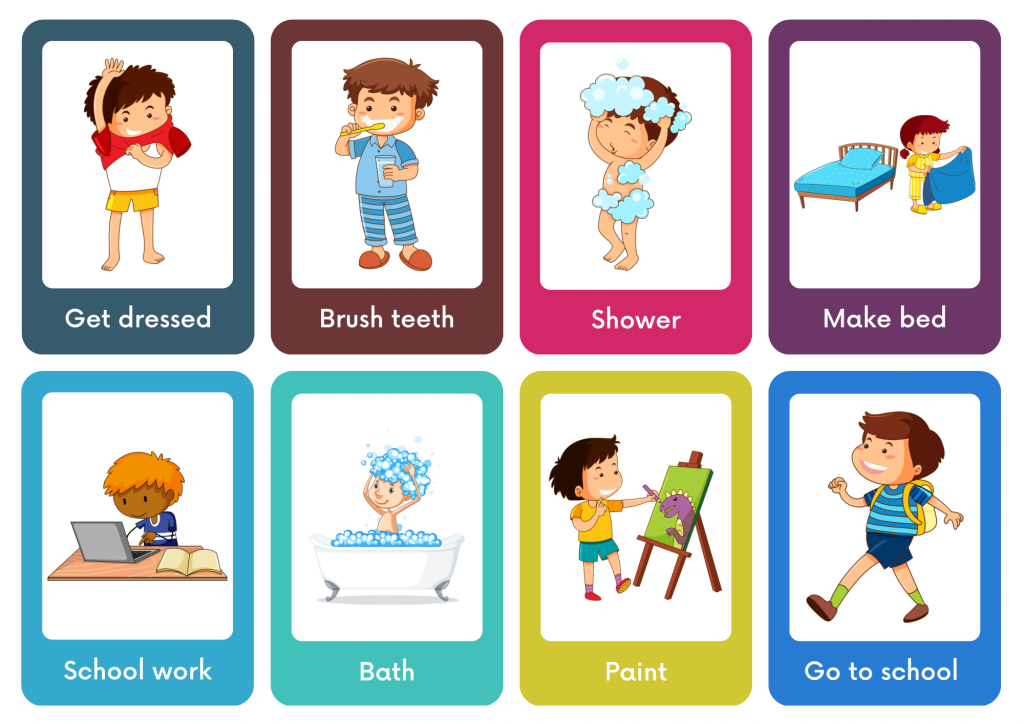As parents and educators, we understand the importance of teaching children to follow directions. Whether it’s learning to tie their shoes or completing a multi-step project at school, the ability to follow directions is a critical skill for children’s success and overall development. However, getting children to comply the first time they are given instructions can be challenging, particularly when dealing with distractions, misunderstandings, or even defiance.
This blog post aims to provide effective strategies that parents and educators can use to improve children’s compliance with directions, fostering a more positive and cooperative environment at home and in the classroom. By utilizing these techniques, we can encourage children to become more independent, responsible, and confident in their abilities to navigate various tasks and situations.
Understanding the Basics to Help Children Follow Directions
Before diving into the strategies for getting children to follow directions the first time, it is essential to consider the factors that influence a child’s ability to comply with instructions. First and foremost, we must have age-appropriate expectations for children, recognizing that their cognitive and emotional development plays a significant role in their capacity to understand and follow directions. Younger children may require more repetition, patience, and guidance, while older children can be expected to grasp complex instructions more readily.
Additionally, individual differences in temperament and learning styles should be taken into account. Some children may be more naturally inclined to follow directions, while others may need extra support to adapt to rules and routines. Lastly, the clarity and conciseness of the instructions given can directly impact a child’s ability to comply. It is crucial to provide directions that are easy to understand, specific, and free from ambiguity to set children up for success.
Strategies for Encouraging Compliance: Establishing Routines and Consistency
One of the most effective ways to promote compliance in children is by establishing routines and maintaining consistency in both expectations and consequences. Predictable schedules and well-defined expectations provide children with a sense of stability and structure, helping them feel more secure in their environment. For example, implementing a consistent morning routine that includes getting dressed, brushing teeth, and having breakfast can help children internalize these expectations and become more self-sufficient in completing these tasks.
Additionally, maintaining consistency in how rules and consequences are applied across different situations reinforces the importance of following directions. When children understand what is expected of them and can anticipate the consequences of their actions, they are more likely to comply with directions the first time they are given. Remember to be patient and persistent, as it may take time for children to adapt to new routines and rules.
Strategies for Encouraging Compliance: Using Positive Reinforcement and Praise
Positive reinforcement and praise are powerful tools for motivating children to follow directions the first time. By acknowledging and rewarding good behavior, we can reinforce the idea that following directions leads to positive outcomes, making children more likely to comply in the future. When children exhibit the desired behavior, provide immediate, specific, and genuine praise, highlighting the positive aspects of their actions. For example, instead of saying “Good job,” say, “I appreciate how quickly and quietly you cleaned up your toys when I asked.” This not only helps children understand what they did well but also emphasizes the importance of following directions.
In addition to verbal praise, consider using age-appropriate rewards for consistent compliance with directions. For younger children, this could include stickers, extra playtime, or a special treat. For older children, rewards might involve additional screen time, a later bedtime, or a small allowance. By reinforcing the connection between following directions and positive outcomes, children will be more motivated to comply the first time they are given instructions.
Children often learn best by observing the actions of those around them, making it essential for parents and educators to model and demonstrate the desired behavior when providing directions. By showing children how to complete a task or behave in a specific situation, we can clarify expectations and give them a tangible example to follow. For instance, if you want a child to put away their toys, you can demonstrate the process by picking up a toy, placing it in the correct spot, and then encouraging the child to do the same. This hands-on approach can be especially helpful for children who learn best through visual or kinesthetic means.
Furthermore, it’s important to model an appropriate response to directions in our own actions. If we expect children to listen and follow instructions, we should demonstrate these behaviors ourselves, whether it’s following rules at home or adhering to guidelines in a public setting. By consistently modeling the importance of following directions, we can set a powerful example for children and reinforce the significance of compliance in various aspects of life.

Strategies for Encouraging Compliance: Breaking Down Instructions into Manageable Steps
Sometimes, children struggle to follow directions because they find the task overwhelming or confusing. To address this issue, break down complex instructions into smaller, more manageable steps. This approach allows children to focus on one aspect of the task at a time and can help prevent feelings of frustration or confusion. For example, instead of asking a child to clean their entire room, provide specific instructions like, “First, put all your clothes in the hamper. Then, pick up the toys from the floor and put them on the shelves.” By simplifying tasks in this manner, children are more likely to understand and follow directions the first time.
Using visual aids or cues can also be beneficial, particularly for younger children or those who have difficulty processing verbal information. For example, you can create a visual schedule with pictures representing each step of a morning routine or use color-coded labels to help children organize their belongings. By providing clear and concise visual cues, children can better understand what is expected of them, ultimately improving their compliance with directions.
Addressing Noncompliance: Identifying the Root Cause of Noncompliance
When children consistently struggle to follow directions the first time, it’s essential to identify the underlying reasons for their noncompliance. Understanding the root cause will allow you to address the issue more effectively and develop targeted strategies for improvement. Some common reasons for noncompliance include:
- Attention-seeking behavior: Children may intentionally ignore directions in order to gain attention, even if it’s negative. In such cases, it’s important to address the child’s need for attention in a positive way, such as spending quality time together or praising appropriate behaviors.
- Power struggles: Noncompliance can sometimes result from a child’s desire to assert control over a situation. To mitigate power struggles, offer choices within the boundaries of the desired outcome, and avoid engaging in arguments or battles of will.
- Lack of understanding: Children may not follow directions because they genuinely don’t understand the instructions or expectations. Ensure that your directions are clear, concise, and age-appropriate, and consider using visual aids or demonstrations to enhance comprehension.
Addressing Noncompliance: Appropriate Consequences for Not Following Directions
When children do not follow directions, it’s essential to implement appropriate consequences to reinforce the importance of compliance. There are two main types of consequences that can be effective in promoting adherence to directions:
- Natural consequences: These are the inevitable results of a child’s actions, such as a toy breaking if it’s not put away properly. Allowing children to experience the natural consequences of their choices can help them understand the importance of following directions.
- Logical consequences: These are consequences that are directly related to the child’s actions and should be implemented in a calm and consistent manner. For example, if a child refuses to clean up their toys, a logical consequence might be losing the privilege of playing with those toys for a specified period of time.
Addressing Noncompliance: Promoting Open Communication and Problem-Solving
Encouraging open communication and teaching problem-solving skills can help children understand the importance of following directions and develop strategies for improved compliance. Allow children to express their feelings and concerns regarding specific tasks or expectations, and work together to find solutions that address both their needs and the desired outcome. This collaborative approach not only fosters a stronger relationship between parents, educators, and children but also empowers children to take ownership of their actions and learn from their mistakes.
Conclusion
In summary, getting children to follow directions the first time is a crucial skill that sets them up for success in various aspects of life. By employing strategies such as establishing routines and consistency, using positive reinforcement and praise, modeling and demonstrating desired behavior, and breaking down instructions into manageable steps, parents and educators can effectively improve children’s compliance with directions. Additionally, addressing noncompliance by identifying its root cause, implementing appropriate consequences, and promoting open communication and problem-solving can further support children’s development in this area.
It’s important to remember that patience and consistency are key when implementing these strategies. Children may require time to adapt to new routines, rules, or expectations, and it’s essential to remain supportive and understanding throughout the process. By working together, parents and educators can create a more positive and cooperative environment, helping children become more independent, responsible, and confident in their abilities to follow directions and navigate the challenges that life presents.



